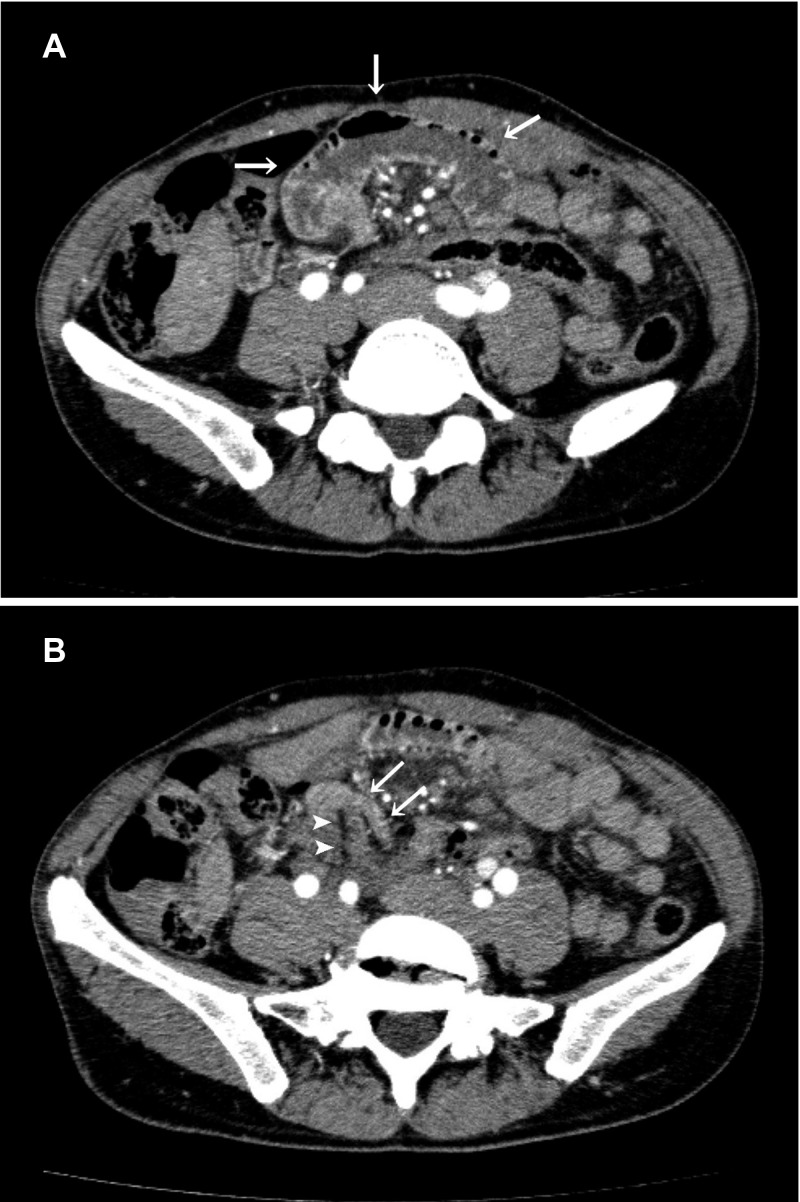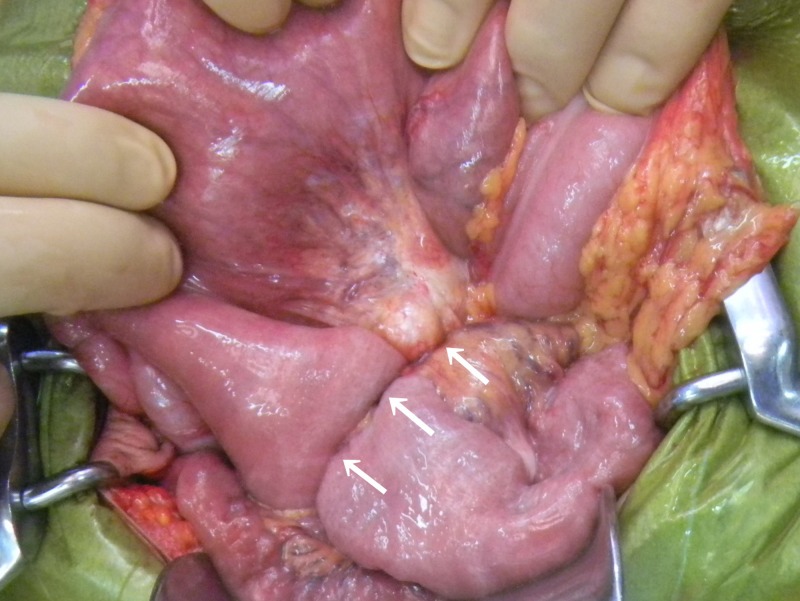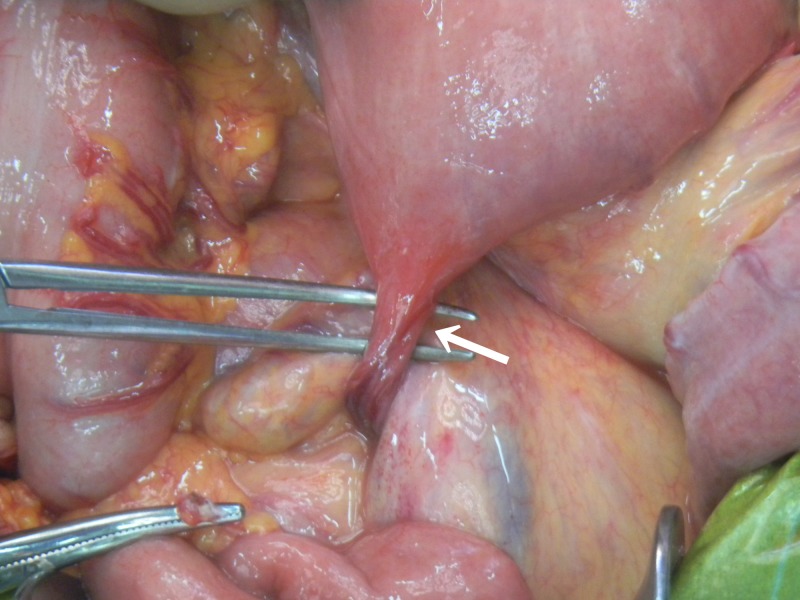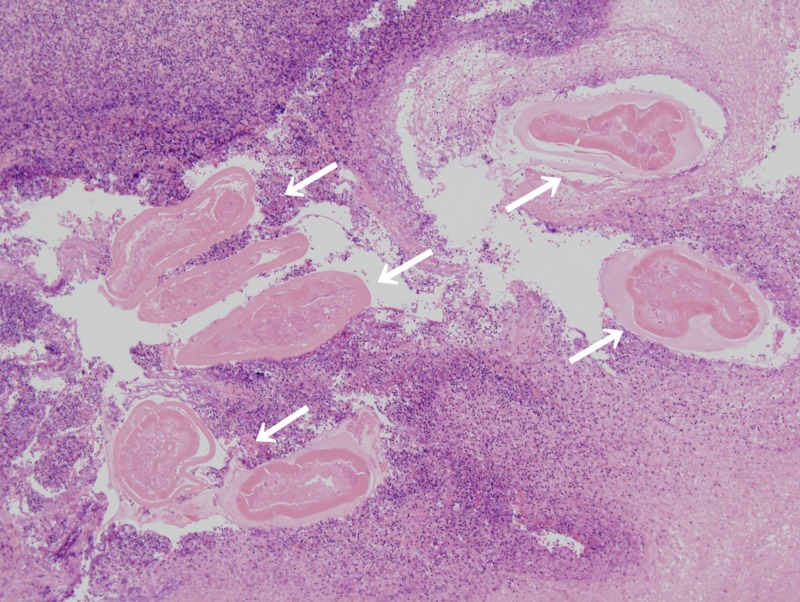A 44-year-old Japanese woman with no history of laparotomy presented with intermittent abdominal pain that had begun 10 hours earlier. Epigastric tenderness with no muscle guarding was observed. Abdominal contrast-enhanced computed tomography showed a dilated upper small intestine and a band near the stenosis (Figure 1). Internal hernia was diagnosed, and conservative treatment with analgesics was administered. However, abdominal pain persisted. Emergency laparoscopy performed 20 hours after onset revealed two bands. Band A was a cyclic structure constricting the upper small intestine (Figure 2). Band B protruded from the jejunum, was 10 cm distal to the ligament of Treitz, and adhered to the mesentery (Figure 3). Both bands, which were comprised of fibrous tissue, were surgically excised. Band B contained an abscess surrounded by granulation tissue and a degenerated worm inside (Figure 4). Immunostaining revealed the worm to be Anisakis simplex. Thus, extragastrointestinal anisakiasis may have caused adhesive intestinal obstruction. Subsequently, the patient recovered completely.
Figure 1.
(A) Contrast-enhanced computed tomography scan of the abdomen showing a dilated upper intestine (arrows). (B) A band near the stenosis (arrowheads) and a collapsed intestine (arrows).
Figure 2.
A cyclic structure (arrows) constricting the upper small intestine.
Figure 3.
A band (arrows) protruded from the jejunum, was 10 cm distal to the ligament of Treitz, and adhered to the mesentery.
Figure 4.
Histopathologic examination indicated an abscess surrounded by granulation tissue and a degenerated worm (arrows) inside (hematoxylin and eosin stain, ×40).
Anisakiasis occurs after eating raw fish or cephalopods contaminated by larvae of the Anisakidae family. Most Anisakis spp. parasitize the gastrointestinal tract, usually the stomach.1 Rarely, anisakiasis occurs ectopically outside the gastrointestinal tract while being asymptomatic and granulomatous.2 Extragastrointestinal anisakiasis should be considered as a possible cause of adhesive intestinal obstruction.
Footnotes
Authors' addresses: Yasuyuki Takamizawa and Yoshifumi Kobayashi, Department of Surgery, Suwa Central Hospital, Nagano, Japan, E-mails: yasu.mizawa@gmail.com and ykobayashi@suwachuo.jp.
References
- 1.Pravettoni V, Primavesi L, Piantanida M. Anisakis simplex: current knowledge. Eur Ann Allergy Clin Immunol. 2012;44:150–156. [PubMed] [Google Scholar]
- 2.Ishikura H, Kobayashi Y, Miyamoto K, Yagi K, Nakajima O, Fujita O, Oikawa Y, Maejima J, Aji T, Akao Y, Hayasaka H. Transition of occurrence of anisakiasis and its paratenic host fishes in Japan, with pathogenesis of anisakiasis. Hokkaido Igaku Zasshi. 1988;63:376–391. [PubMed] [Google Scholar]






